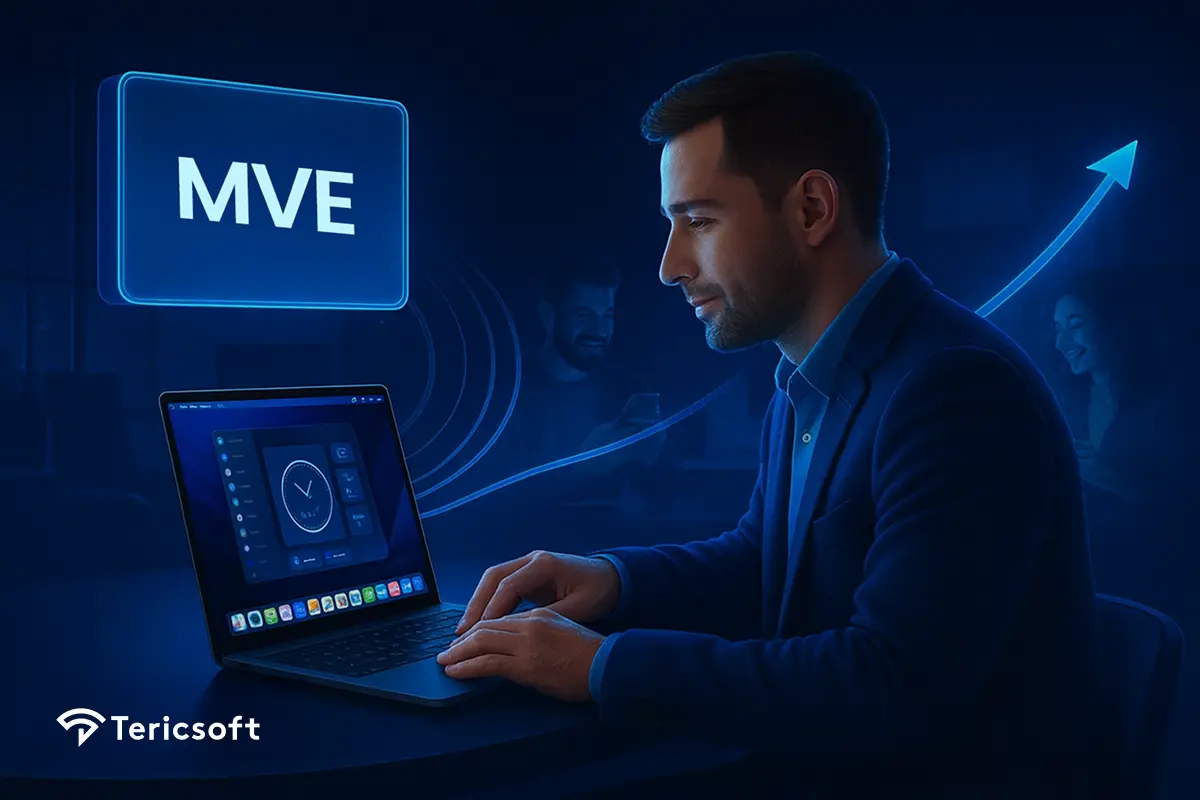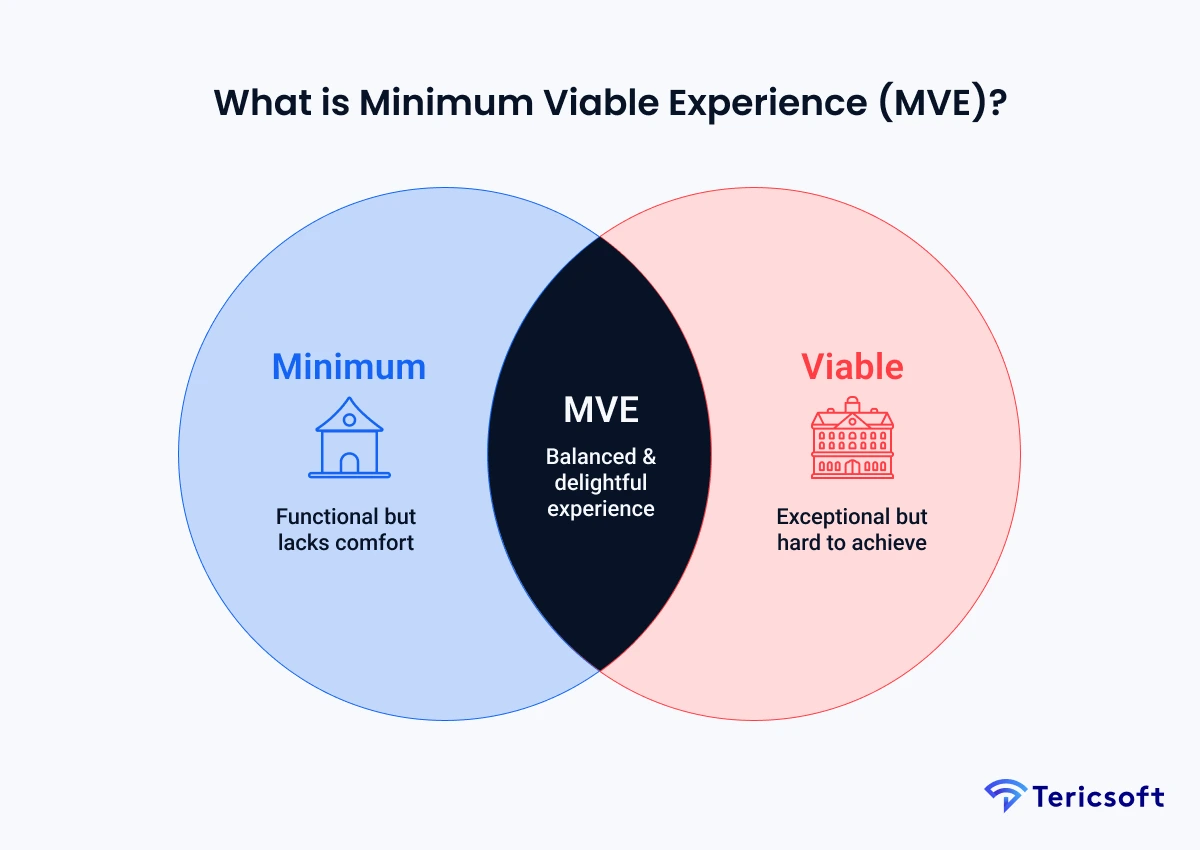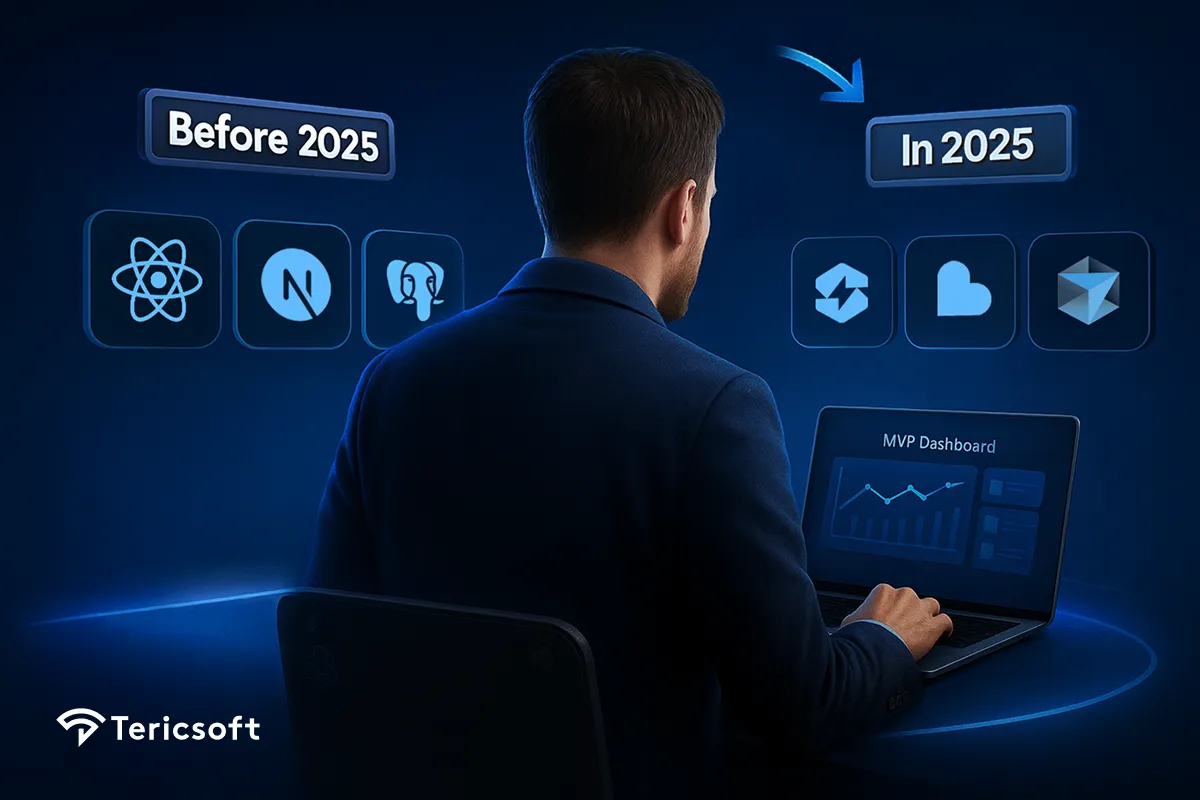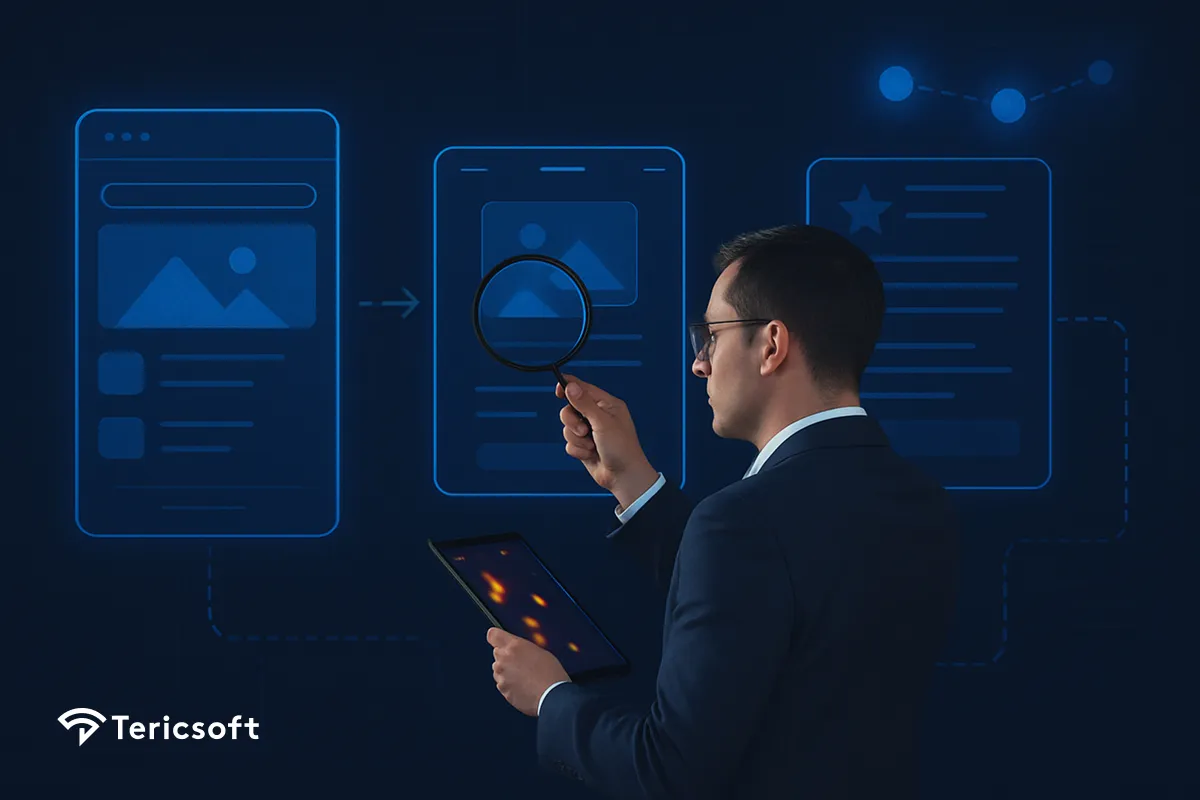
What is Minimum Viable Experience (MVE)? How it redefines product validation from functionality to emotion, and why startups that design for experience, not just speed, win in the age of AI-powered prototyping.
The era of product prototyping has changed forever. What once took months can now be crafted in hours. With the rise of Vibe Coding, where AI systems co-develop prototypes, user flows and product logic with human collaboration, startups can launch POCs and MVPs faster than ever before.
But here is the paradox: when everyone can build fast, what truly differentiates is not only how quickly you ship, but how deeply your product connects. That is where the next evolution begins: Minimum Viable Experience (MVE).
“People ignore design that ignores people.”
— Frank Chimero
At Tericsoft, we believe the frontier of product design is shifting from “Will it work?” to “Will they love it?” We help founders and product teams move beyond speed to meaning, beyond function to feeling, and build lasting products by delivering Minimum Viable Experience from the first session.
Minimum Viable Experience (MVE): Redefining Product Validation
In traditional product journeys, validation meant proving that something worked. With MVE, it now means proving that something feels right too.
Definition: Minimum Viable Experience (MVE) is the smallest coherent journey that enables a user to succeed with clarity, trust and delight, not just completion.
The difference between “viable” and “valuable” is at the heart of the Minimum Viable Experience concept. While Minimum Viable Product (MVP) focuses on core functionality, Minimum Viable Experience tests emotional resonance.
Here is a telling metric: According to a Forrester report in 2024, products with an experience-led launch saw 51% better retention within the first 30 days compared to feature-led launches.
When you consider that users form an opinion of your product within the first three minutes of use, that kind of uplift matters. Imagine a marketplace that launched its core booking logic early but neglected how the user felt during the first booking. The feature worked; the emotion failed. That gap is exactly where MVE steps in.

From MVP to MVE: The Evolution of Product Thinking
The phrase Minimum Viable Product (MVP) revolutionized product launches. It made “done” better than “perfect.” But now, done is no longer enough. When every founder can prototype with Vibe Coding and spin a working product in a weekend, the question becomes: Will anyone return?
“It is not the strongest or the most intelligent who will survive but those who can best manage change.”
— Charles Darwin
Here is an industry insight: Gartner estimates that 30% of generative AI projects will be abandoned by the end of 2025 due to lack of experiential design, signaling significant challenges for retention beyond launch.
Story time. A founder rushes to build a SaaS in 72 hours using Vibe Coding. The MVP is technically flawless: API integrations complete, UI responsive, documentation polished. Launch day traffic is solid, but by week two, engagement flattens and churn ticks upward. The reason? The product solved a problem, but it did not connect.
The next sprint the team pivoted. They re-framed the launch as Minimum Viable Experience rather than merely “get to market.” They trimmed features, rewrote onboarding copy to focus on the user’s goal, inserted an AI-driven helper, and created a sense of “first success” in the first minute. Retention jumped. Growth followed.
Amplitude’s 2025 investor presentation shows that companies focused on retention improved their net revenue retention rate from 96% to 104% year-over-year, underscoring the measurable impact of experience-driven product strategies.
MVE vs MLP vs MVP: What Truly Drives Adoption
The journey from MVP to MLP to MVE represents how product thinking has matured from testing functionality to validating emotion to mastering continuity. Each step raises the bar, from does it work to does it delight to does it last.
Imagine three startup founders sitting side by side. Each launches a version of the same product. Their outcomes tell the story of how these three mindsets differ.
1. Minimum Viable Product (MVP): The Functionality Gate
The first founder follows the traditional playbook: build the smallest thing that works. Their Minimum Viable Product (MVP) launches in two weeks, and users can complete the main task. It’s lean, efficient, and fast.
But while users can use it, few want to use it again. The interface feels raw. There’s no guided experience. Feedback is, “I get what it does, but it’s hard to stick with.”
“If you are not embarrassed by the first version of your product, you’ve launched too late.”
— Reid Hoffman
- Key trait: MVPs validate function.
- Question answered: Can it work?
- Risk reduced: Technical feasibility.
Gartner’s research notes a high rate of abandonment for generative AI projects after initial validation, with 30% of initiatives not progressing beyond proof-of-concept stages, mainly due to missing experience layers.
2. Minimum Loveable Product (MLP): The Emotion Layer
The second founder takes a different route. They refine the MVP into a Minimum Loveable Product (MLP), not just usable, but enjoyable. The product greets the user with intuitive copy, polished UI, and tiny human touches. Users feel guided and respected.
This version wins hearts. Early adopters start sharing screenshots and praising the flow on social media. Retention doubles, not because of new features, but because the product feels right.
“Design is not just what it looks like and feels like. Design is how it works.”
— Steve Jobs
- Key trait: MLPs validate delight.
- Question answered: Do users enjoy it?
- Risk reduced: Desirability risk.
Industry discussions confirm that Net Promoter Score (NPS) is a vital metric for evaluating emotional engagement in user experience, widely used to benchmark product satisfaction and recommendation rates.
3. Minimum Viable Experience (MVE): The Continuity Breakthrough
The third founder builds fast using Vibe Coding but aims higher, a Minimum Viable Experience (MVE). The team designs the entire loop, from onboarding to the first success to post-use follow-up. The product doesn’t just work and delight; it remembers, adapts, and grows with the user.
Users feel a sense of partnership with the product. When they return, the system recalls preferences and evolves its tone. That’s when you know you’ve crossed from product to relationship.
“The next frontier of innovation isn’t about building more features; it’s about designing experiences that make people feel understood.”
— Satya Nadella
- Key trait: MVEs validate continuity and connection.
- Question answered: Does the experience make them stay?
- Risk reduced: Retention and relevance risk.
The Forrester 2024 Customer Experience Index finds that customer-obsessed organizations retain customers at rates up to 51% higher than competitors, highlighting the business impact of experience-led product launches.
Side-by-Side Comparison
Benefits of Minimum Viable Experience (MVE)

Builds early loyalty and advocacy
When your product speaks to the user’s journey and respects their time, they become advocates, not just users.
The Forrester Brand Experience Index 2025 illustrates that brands with superior experience metrics consistently outperform peers in advocacy measures such as Net Promoter Score (NPS).
Reduces churn in post-launch phases
When the first session feels meaningful, the second session is far more likely.
Amplitude’s research indicates that products designed with experience in mind reduce user churn by up to 45% in the first 90 days.
Attracts investors faster
Design signals maturity. When you track emotional and experiential metrics, you demonstrate product-market fit more credibly.
Data from ForumVC and McKinsey indicate investors prioritize early traction and validated experience metrics, resulting in faster and more successful seed round completions for startups focused on customer validation.
Accelerates word-of-mouth growth
2Experience is what gets shared. Delight is what gets recommended.
“Design is not just what it looks like; it is how it makes people feel.”
— Brian Chesky
When you build for experience, you activate networks instead of simply users.
How to Measure an MVE
When you ask How to Measure an MVE, you are asking how to quantify something that often feels qualitative. Here is the playbook:
- Emotional Engagement Index (EEI) – real-time sentiment tracking across the first session
- Time-to-Delight (TTD) – how long from sign-up to first meaningful success
- Repeat Interaction Ratio (RIR) – percentage of users returning to the core action within a week
- Net Emotional Value (NEV) – a pulse measure of trust, ease and relevance
“If you focus on delight, growth will follow naturally.”
— Julie Zhuo
Example: A health-tech product reduced Time-to-Delight from 3.1 minutes to 1.0 minute. The Repeat Interaction Ratio climbed by 38%.
Every one of these metrics should live on your dashboard alongside activation and retention. Together they explain not just “did they convert” but “did they care”.
MVE in the Age of AI and Automation
We are now in the age of Vibe Coding. The speed to build is minimal. What matters is the experience you deliver to the first user, now. Instant prototypes are table stakes. What differentiates is how you craft the next phase: Minimum Viable Experience.
At Tericsoft we codify this shift. With our Super Engineer AI framework we:
- Auto-generate testing variants of onboarding flows
- Embed AI-driven micro-copy tailored to user segments
- Monitor emotion and behavior in real-time, then feed that back into the next sprint
Experience is the new moat.
The Design Philosophy Behind Minimum Viable Experience
Minimum Viable Experience is both a design and engineering philosophy. You begin not with “what can we build” but “what must the user feel”. The goal is not simply fewer screens, but the right screens in the right moment with the right tone.
“Simplicity is the ultimate sophistication.”
— Leonardo da Vinci
At Tericsoft we blend design thinking with machine learning. We use behavior clustering to identify early delight moments, predictive friction mapping to surface drop-off risks, and adaptive journeys powered by context-aware LLM systems.
From MVP Launches to MVE Culture: The Future of Product Development
With Vibe Coding operational, what matters next is how you iterate. Minimum Viable Experience is not a one-time milestone; it becomes part of the culture. You embed experience validation into every sprint, not just the launch. Investors now ask for “experience snapshots”, not just feature timetables.
The new formula is clear. If MVP was about doing fast, MVE is about doing meaningful. The future belongs to teams that move from “can we build it” to “will they stay with it”.
Why Choose Tericsoft for Experience-Led Product Development
At Tericsoft we are built for the age of Minimum Viable Experience. We enable startups and enterprises to:
- Leverage Super Engineer AI for experience-first sprints
- Run lean UX cycles where design, measurement and iteration happen together
- Deliver across India, UAE, UK, US with local nuance
- Engineer agentic, memory-enabled LLM applications that personalize onboarding, context and support
- Use retrieval pipelines, dynamic context optimization and AI-powered experience intelligence
Call to Action: Your MVP should not only work. It should wow. Let’s build your Minimum Viable Experience together.
Conclusion: From Building Fast to Feeling Right
Vibe Coding gave you speed. Minimum Viable Experience gives you depth. If your product is only built quickly, but feels generic, you will struggle. If your product is built with care, attention and emotional resonance, you win.
The question today is not only “Can you build it?” but “Can you make them stay?” At Tericsoft we are here to help you answer yes.









